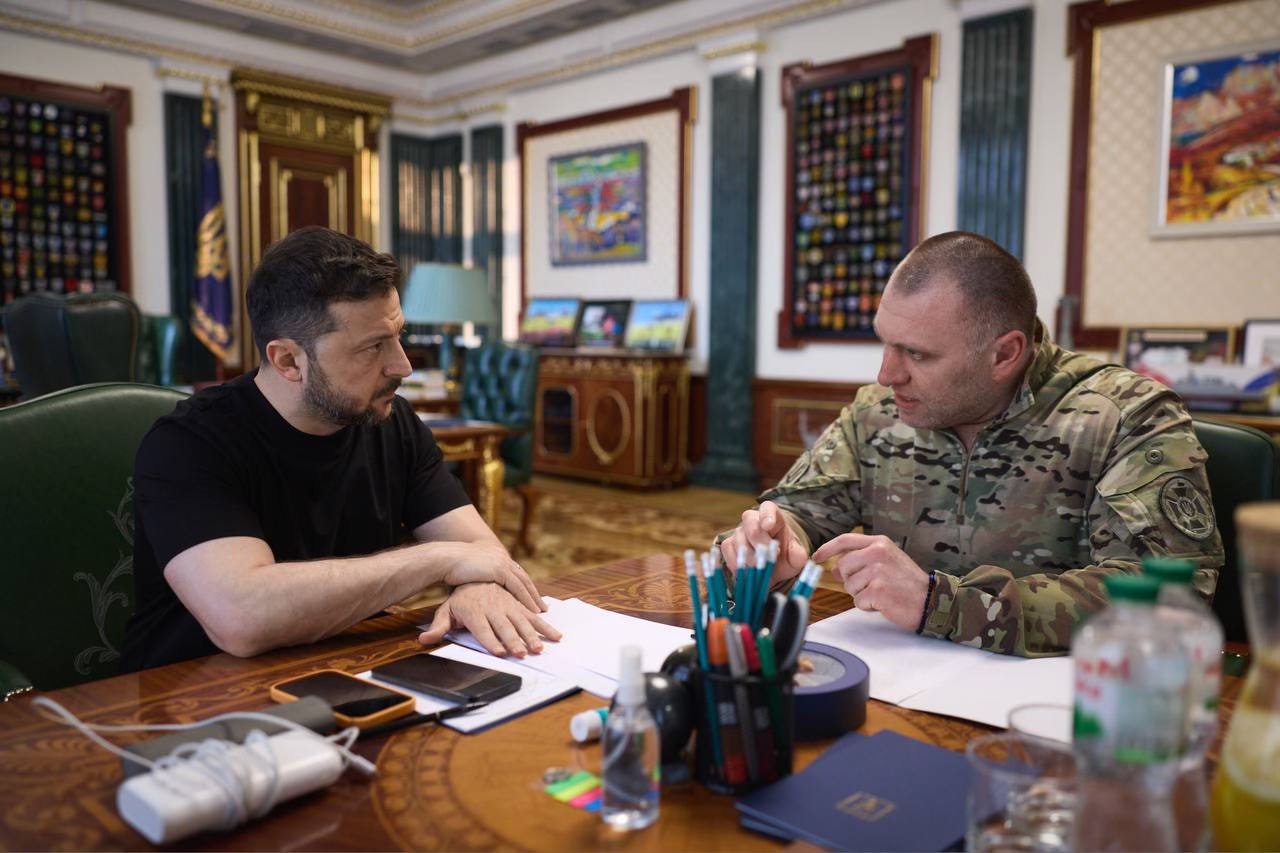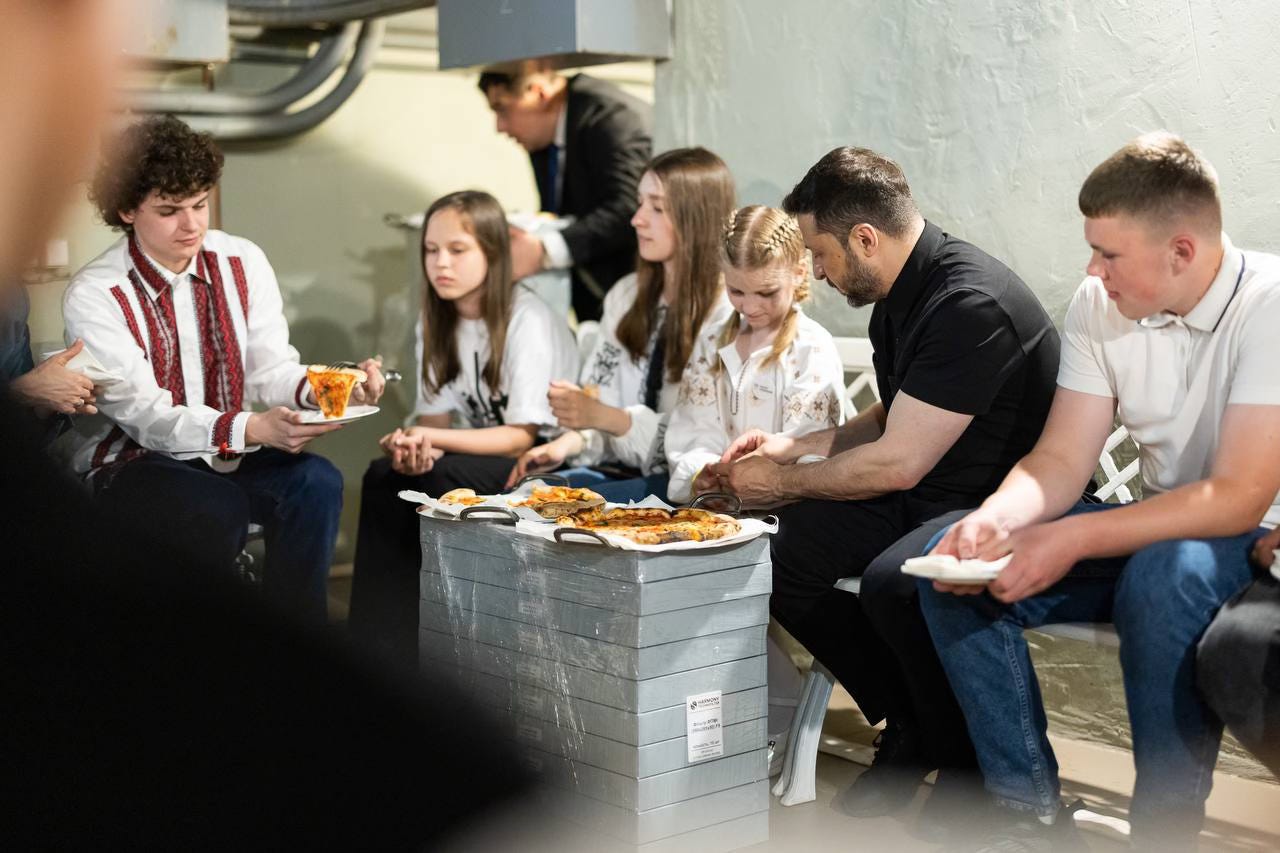Russian war in Ukraine intensifies as peace talks appear at a dead end
Russia showed it had no intention of compromising on its goal of subjugating Ukraine even as it lost a third of its strategic bombers

Report on week 171 of the Ukraine war, May 28 - June 4. Hellenica covers the war in Ukraine on a weekly basis as a geopolitical story of the greatest consequence for all of Europe, including Greece.
Ukraine destroyed Russian strategic bombers in an unprecedented undercover drone operation while Russia launched its biggest-yet air raid on Ukraine’s cities and intensified attacks on its northern region of Sumy, when the two sides met for peace talks in Istanbul on Monday, June 2.
The two respective drone operations were emblematic of how direct peace talks, which began on May 15, have not abated the intensity of the conflict and may have deepened it.
Russia’s drone-and-missile attack on Saturday night involved 472 Shahed kamikaze drones, four cruise missiles and three ballistic missiles. Ukraine neutralised 385 aerial targets, its air force said, including 3 of the cruise missiles.
Ukraine’s operation Spiderweb came a day later, and targeted the types of planes Russia has used to launched those cruise missiles – including Tupolev-22M3 and Tupolev-95.
Spiderweb involved 117 drones smuggled into Russia and launched simultaneously near Russian airfields where the bombers were parked.
Video released by Ukraine showed Tu-95s exploding in orange flames as the drones passed over them, demonstrating that their fuel tanks were full and they were in service.
Ukraine’s State Security Service (SBU), which carried out the operation, told Ukrainian media 41 planes were hit, which, Ukrainian president Volodymyr Zelenskyy said amounted to “34% of the strategic cruise missile carriers stationed at air bases.” The SBU estimated the damage at $7bn.
Western military analysts and open source media had not fully corroborated Ukraine’s story by Wednesday, but fires and explosions were reported at five Russian bases.
For the first time, Ukraine claimed to have hit the Olenya airbase in the Russian Arctic, almost 2,000km from Ukraine, where all Tu-95 bombers were reported destroyed.
Government-released footage of strikes on Russian Tu-22M3 and Tu-95 bombers as part of operation Spiderweb.
Also reportedly struck were the Belaya airbase in Irkutsk, over 4,000km from Ukraine, where three Tu-95strategic bombers were reported destroyed; the Dyagilevo airbase in Ryazan, only 175km from downtown Moscow; and the Ivanovo airfield, 250km northeast of Moscow, where at least one A-50 was destroyed – a $500mn airborne radar Russia uses to identify Ukrainian air defense systems and coordinate Russian fighter jet targeting. Fire was reported at a fifth airfield, also near Moscow.
Zelenskyy called it “an absolutely brilliant result, an independent result of Ukraine,” and said it had been “a year, six months and nine days from the start of planning.”
There was no comment from the Kremlin.
Russia’s defence ministry admitted only that “in Murmansk and Irkutsk Regions, as a result of [First Person View] drones launched from an area in close proximity to airfields, several aircraft caught fire,” but that similar attacks were repelled in Ivanovo, Ryazan and Amur.
Russia also said that “some participants of the terrorist attacks were detained,” although Zelenskyy said that “our people who prepared the operation were withdrawn from Russian territory on time.”
“Russia regularly deploys Tu-95 and Tu-22M3 to launch… cruise missiles against Ukraine,” wrote the Institute for the Study of War, a Washington-based think thank, adding, “The downing of Russian A-50 aircraft has previously temporarily constrained Russian aviation activities over Ukraine.”
Russian pro-Kremlin Telegram channel Rybar and Ukrainian military observer Tatarigami said Russia no longer builds chassis for Tu-95s and Tu-22s, making them impossible to replace. Bloomberg reported that Russia’s reliance on sanctioned Western components will keep it from putting even damaged aircraft back into service.
The New York Times estimated Ukraine may have destroyed or damaged 20 aircraft, but it’s possible that not all strike video has yet been posted on open source media.
“If even half the total claim of 41 aircraft damaged/destroyed is confirmed, it will have a significant impact on the capacity of the Russian Long Range Aviation force to keep up its regular large scale cruise missile salvos against Ukrainian cities and infrastructure,” aviation expert Justin Bronk of the Royal United Services Institute told the New York Times.
The operation “will force Russian officials to consider redistributing Russia's air defense systems to cover a much wider range of territory,” said the ISW.
The damaged and destroyed Russian aircraft had launched 2,437 cruise missiles against Ukraine, Ukrainian Air Force spokesman Yuri Ignat told Ukrainska Pravda, of which 671 had got through air defences.
Spiderweb was a part of a wider and long-term strategy to interdict Russian logistics, energy and military production.
“In May, DeepStrike weapons struck 58 targets on the territory of the Russian Federation,” wrote Ukrainian commander-in-chief Oleksandr Syrskyi on his Telegram channel, specifying they were military facilities including “explosives production facilities and strike UAVs.”
Government-released footage of the SBU strike on the Kerch bridge on June 3.
Ukraine’s SBU struck again on Tuesday [June 3], damaging the Kerch Bridge, a vital Russian supply line to Crimea, for the third time during the war. Video showed an underwater explosion against one of the bridge’s stanchions, suggesting Ukraine had used an underwater unmanned vehicle.
Moscow denied there was any real damage. “Traffic on the Crimean Bridge is in its standard operational mode,” said the Russian transport ministry on Tuesday.
Russia creeps forward
Marring Ukraine’s success was the news of persistent Russian advances, albeit small and incremental.
The most alarming were near the northern city of Sumy, only 30km from the Russian border.
Geolocated footage showed that Russian troops took the villages of Konstyantynivka on the border and Oleksiivka, 4km from the border, on Sunday.
By Tuesday Russian forces were close enough to launch rocket artillery into the city of Sumy, killing four people and wounding 30.
“Rocket artillery against an ordinary city – the Russians struck right on the street, hitting ordinary residential buildings. Sleazebags,” said Zelenskyy.
On Sunday Russian troops also appeared to have seized the settlements of Dyliivka and Zorya, north and west of Toretsk in Ukraine’s east.
Geolocated footage indicated that Russian troops had also advanced towards Lyman and Kurakhove, two other key targets in Ukraine’s east.
These gains were part of a slow advance that has gone on for over a year, but they were signs of Russian president Vladimir Putin’s determination to complete his conquest of Ukraine’s east.
Talks secure another POW exchange
That determination was on display in Istanbul, where Ukrainian and Russian negotiators met on Monday [June 2], for a second round of peace talks.
Russia presented a ceasefire memorandum that demanded Ukraine formally cede all the territory Russia has taken in Luhansk, Donetsk, Zaporizhia and Kherson, plus the parts of those regions it hasn’t yet seized, which could take years to conquer and come at great cost.
Syrskyi said Russian casualties this year alone passed the 200,000 mark on Tuesday.
Russia’s memorandum also demanded a limit to the size of Ukraine’s armed forces, and a commitment that Ukraine will neither join foreign military alliances nor allow foreign troops on its soil.
It also demanded a Ukrainian election within 100 days of signing the ceasefire agreement, underlining Moscow’s desire to replace the pro-Western Zelenskyy in Kyiv.
These demands are consistent with the terms Putin laid out in a speech in June 2024, and Ukrainian negotiators, who had not seen Russia’s memorandum before arriving at the talks at 1pm on Monday, departed after little more than an hour.
The two sides did agree to an exchange of at least a thousand prisoners of war, and possibly as many as 1,200, prioritising the young (18-25) and wounded. They also agreed to an exchange of 6,000 bodies a side.
They agreed to hold a third round of talks in the last ten days of June, with Ukraine’s defence minister, Rustem Umerov, suggesting it involve Putin and Zelenskyy, “because decisions can only be made by those who really make decisions.”
The two leaders were supposed to meet at the first round of talks on May 15, but only Zelenskyy showed up.
“The Istanbul talks are not for striking a compromise peace on someone else’s delusional terms but for ensuring our swift victory and the complete destruction of the neo-Nazi regime,” explained Dmitry Medvedev, the deputy chairman of Russia’s Security Council, on his Telegram channel.
“Our Army is pushing forward and will continue to advance. Everything that needs to be blown up will be blown up, and those who must be eliminated will be,” he concluded.

More sanctions for Russia?
US president Donald Trump has refrained from imposing new sanctions on Moscow, but his stance is now losing supporters in the US Congress.
Senators Sidney Blumenthal and Lindsey Graham said they would this week table legislation imposing 500% tariffs on any country that imports oil, gas and uranium from Russia. Graham called it “the most draconian bill I’ve ever seen in my life in the Senate.”
They made the announcement after a weekend trip to Kyiv and a meeting with French president Emmanuel Macron in Paris.
“What I learned on this trip was he’s preparing for more war,” Graham said of Putin.
The bill would target China and India, which account for the bulk of Russian energy exports, totalling €233bn last year according to a BBC investigation.
But it could theoretically include EU members, who spent a reported €23bn on Russian oil and gas last year.
A number of EU members sought exceptions from Russian oil bans in early 2023, and the EU has never banned Russian gas, though it has almost completely stopped importing it.


